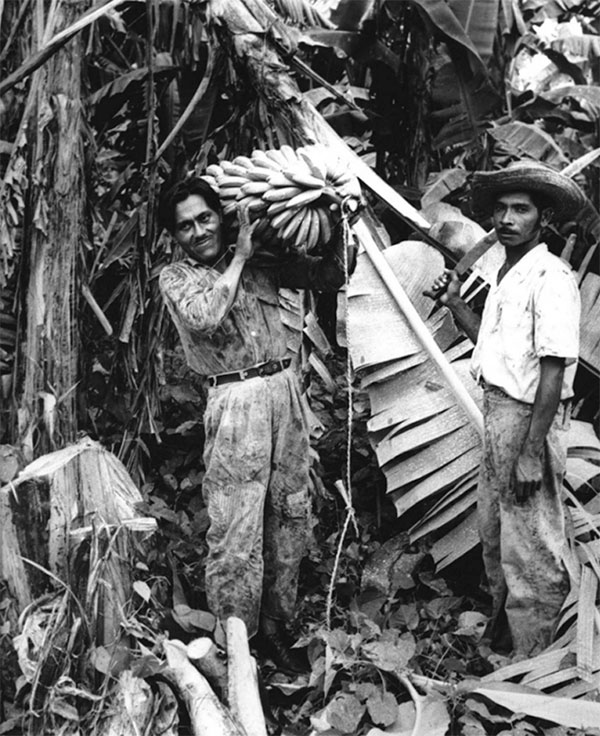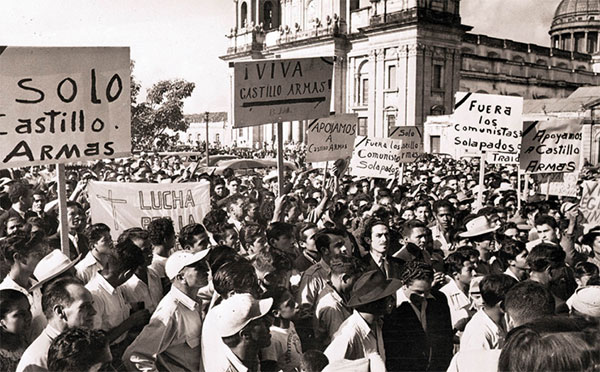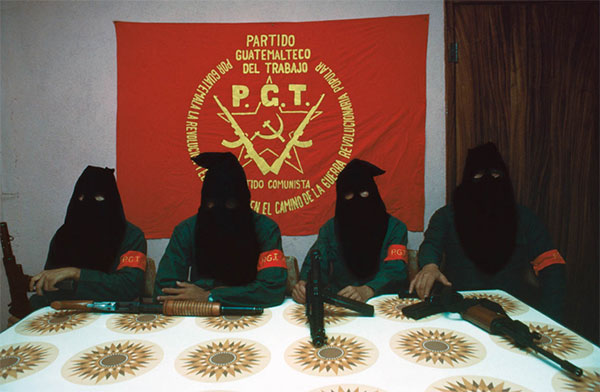BANANA REPUBLICS
The canal brought mostly positive changes to Panama. Infrastructure was developed to treat water, sewage, and garbage within the Canal Zone and the cities of Panama and Colón. The area was even rid of yellow fever using techniques pioneered by Cuban physician Carlos Finley by 1905. Although the US originally signed a contract to operate the canal in perpetuity, its operation and all US military bases were turned over to Panama on 31 December, 1999.
Guatemala in the 20th century
A series of weak presidents and military coups characterized the first decades of the 20th century in Guatemala. Then, in 1931, General Jorge Ubico was elected as president; he was to rule until 1944. During his 13 years in power, Ubico managed to improve Guatemala’s economic situation and bring about political stability. But individual freedoms were restricted and he manipulated constitution, legislative, and legal powers for his own ends. Ubico imposed military discipline throughout Guatemala, so that even the national symphony orchestra played in military uniforms.
Ubico was finally overthrown in 1944 and the reformist Juan José Arévalo was elected president under a new constitution in 1945. Arévalo set in motion important changes in education, land ownership, and labor laws. These measures brought resistance from the more conservative sectors of Guatemalan society and there were several attempts to depose him. Despite these plots, Arévalo succeeded in completing his six years in office, and in 1950 handed over to another reform-minded president, Jácobo Árbenz Guzmán. His attempts to break up the huge rural estates through land reform programs and to control the power of the United Fruit Company soon led to protests.

United Fruit Company plantation in Guatemala, 1961.
The United States branded Árbenz a communist, and in 1954 they backed a coup by Colonel Carlos Castillo Armas and the National Liberation Movement. Faced with an invasion from Honduras led by Castillo Armas, Árbenz was forced to resign on 27 June, 1954, paving the way for Castillo Armas to take over. The civil war that rocked Guatemala for more than three decades is widely regarded to have started with the 1954 coup that overthrew Árbenz.
For the next 30 years, Guatemala was governed by a succession of military rulers. The US-supported Castillo Armas was assassinated in the National Palace in 1957; from then on the country was subject to increasing violence, as trade unions, left-wing guerrillas, and other groups fought against the brutal military rule.

Supporters of Colonel Castillo Armas’ anti-Communist government marching in Guatemala City in 1954.
The Castillo government had built up a ‘blacklist’ of more than 40,000 politicians, trade unionists, grass-roots leaders, and intellectuals whom it regarded as a threat. Many were imprisoned, or forced into exile. The Church, too, was subjected to violence by the armed forces, who resented the clergy for their support of Maya villagers. Between 1978 and 1983, 13 Catholic priests were killed and more than 100 fled the country.
Left-wing groups responded by forming a variety of organizations including, by the beginning of the 1960s, guerrilla armies. During the late 1970s and early 1980s the civil war reached its climax. The guerrillas initially scored a number of military victories, but the army hit back using scorched-earth tactics and a murderously successful terror campaign in the highlands. Several thousand people were killed each year during this period; the vast majority were Indigenous Maya people who had nothing to do with the struggle.
The long road to peace
In 1982 a military junta toppled the government of Lucas García and, in 1983, General Ríos Montt took control. It was during his period in power that the repression in the countryside reached a peak. Counter-insurgency techniques ruthlessly implemented by the Guatemalan army led to the murder, torture, and displacement of many thousands of peasants in these years, among Guatemala’s darkest. In 1984, the military ruler General Óscar Mejía Víctores ordered the establishment of a new constitution, which led to the election of Guatemala’s first civilian president in more than 30 years, Vinicio Cerezo Arévalo, a Christian Democrat.
“In Guatemala there are two presidents, and one of them has a machine gun with which he is always threatening the other.” Juan José Arévalo (President 1945–50)
With the return of civilian government in 1986, the attempts to achieve peace began in earnest. The guerrilla organizations realized that they could not overthrow the Guatemalan state by violence. One of the chief problems for these negotiations was the fact that the army considered it had eliminated what it called ‘subversion,’ and therefore there was nothing to negotiate. Cerezo moved only cautiously during his four years in office to try to curb the power of the armed forces and to bring the continuing civil war to an end.

Guatemalan Labor Party (PGT, associated with Communist Party) guerrillas with their weapons, Guatemala City, 1981.
Cerezo’s successor as president from 1990 was Jorge Serrano, who fared even worse. Although talks between the armed forces and the Guatemalan National Revolutionary Unity (URNG) guerrillas began in Mexico City in 1991, very little progress was actually made toward peace. The guerrillas wanted peace accords that would guarantee substantial change in Guatemala. The armed forces were anxious not to be held responsible for the 200,000 deaths that had occurred during the violence. They also wished to avoid any sweeping reforms to the army or the police.
The deteriorating situation within Guatemala led Serrano to attempt to assume dictatorial powers in 1993, though he was quickly ousted. Elections were organized for the end of 1995, which gave victory to Álvaro Arzú, a center-right candidate. In March 1996, the guerrilla organization URNG agreed to a ceasefire. This was followed by rapid progress in other areas of the peace negotiations, and on 29 December, 1996, an agreement for a firm and lasting peace was signed by the government and the rebels in Guatemala City. The principal parts of the agreement were to carry out an investigation of the human-rights abuses committed during the civil war, a commitment to demilitarize society, and to introduce constitutional changes to safeguard Indigenous rights in Guatemala.
Initially, the outlook was positive as the guerrillas handed in their weapons and formed a political party, while MINUGUA (the United Nations Mission to Guatemala) arrived to oversee the implementation of the accords. Some reforms of the armed forces were carried out and a new constitution was framed (which promised an inclusive role for Indigenous people). A commission was also established to investigate human rights crimes committed during the civil war. Progress proved very slow, however, as the Guatemalan military stalled on key commitments and proved reluctant to relinquish its power base.
Army personnel were later implicated in the assassination of Bishop Juan Geradi in 1998, two days after his offices had published a report that blamed the military and civil-defense patrols for 93 percent of civil war deaths. Meanwhile, a referendum rejected a constitutional amendment to legitimize Maya rights.